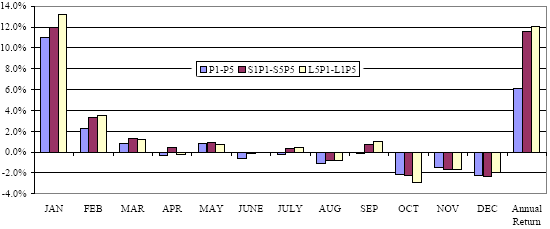Do investors fool themselves into thinking a low share price means a cheap price? In other words, are the simple nominal prices of stocks predictive of their future returns? In their December 2008 paper entitled “Is Share Price Relevant?”, Soosung Hwang and Chensheng Lu investigate this question by measuring the performance of portfolios formed annually by sorting listed common stocks by nominal price into five ranges: less than or equal to $5, $5 to $10, $10 to $15, $15 to $20, and more than $20. Using delisting-adjusted price data for a broad sample of NYSE/AMEX/NASDAQ common stocks over the period July 1963 through December 2006, they conclude that:
- Over the period 1972 (when NASDAQ stocks enter the sample) to 2006, stocks selling for $5 or less represent on average 28% of listed common stocks, peaking at 48% in December 1974.
- Share price relates inversely to future return.
- A hedge portfolio that is long (short) stocks priced $5 or less (more than $20), rebalanced annually at the end of June, generates an average monthly return of 0.53% over the entire 1963-2006 sample period before trading frictions. Lengthening the rebalancing period to two years increases the average monthly return to 0.58% for a cumulative return of 15% before trading frictions.
- This portfolio is likely profitable after accounting for trading frictions, especially for two-year rebalancing, and profitability is substantially independent of size, stock trading liquidity, book-to-market, earnings-price ratio and momentum.
- Large abnormal returns in January drive the outperformance of low-priced stocks. For annual rebalancing, the average monthly return difference between stocks priced $5 or less and stocks priced over $20 is 11% for January, compared to -0.4% for the other 11 months (see the chart below).
- These results may explain the attractiveness of stock splits to firm management.
The following chart, taken from the paper, compares average returns by calendar month over the entire 1963-2006 sample period for three annually rebalanced hedge portfolios:
P1-P5 is long (short) stocks priced $5 or less (more than $20).
S1P1-S5P5 is long (short) small-capitalization stocks priced $5 or less (large-capitalization stocks more than $20).
L5P1-L1P5 is long (short) illiquid stocks priced $5 or less (liquid stocks more than $20).
Average returns are strongest by far during the month of January for all three portfolios. Average returns are positive during the first quarter and negative during the last quarter. The price effect is not equivalent to the size effect or the liquidity effect.
It appears that forming the portfolios at the end of December and liquidating them at the end of March may be optimal.

In summary, investors may be able to exploit a stock price effect by focusing on the associated abnormally positive return during the first calendar quarter.